-
Posts
1,172 -
Joined
-
Last visited
-
Days Won
6
Content Type
Profiles
Forums
Events
Store
Posts posted by MVPaquatics
-
-
I am currently breeding Banggai Cardinalfish
Currently I have 2 breeding pairs, one pair is actually from the first pair, which would make them F2 generation.
Pairing:
The hardest part is obtaining a good pair. First off, as many of you know, they are difficult to sex. I have found they aren't really sexable until about 9-10 months of age when they become sexually mature. When it comes to determining sex, I first look at behavior or physical features. Don't look at size or dorsal fins, they are misleading. My pairs are opposites in this regard; the oldest pair I initially thought the male was female and vice-versa. The female of the oldest pair is larger, and also a longer dorsal fin (which is why I thought it was a male) than the male. The younger pair is more traditional, with male being bigger and larger features.
I look at behavior first. If looking to obtain a good pair, buy a group of about 6. The most dominant ones will pair off first and start pushing the group away, and then net them out. It is very hard to have one fish, and guess at the sex, and just buy another single fish. It usually doesn't turn out well. Even the group of 6 has a little "shoving" to pair off, one-on-one is usually too much for the new arrival. By having a group, you distribute the "shoving" among 6 until a pair is formed, then they almost always claim half the tank and push the remaining to the other side, then you have a pair and no fish died. You should then move the others out; I often give them away to let people make pairs, as you can make your money back with many babies.
Secondly, after the pair is established, it becomes very easy to know which is male and which is female. The jawline is the easiest physical feature for me to use. Males have "rounder" jawline, while the female is more straight. My females also get bright reddish bellies when they are ready to spawn.
Another reason I like group pairing is that you are more likely to get the strongest pair. One-on-one pairing you can end up with a weak pair or a weak female, or worse a weak male. The biggest female will choose the largest male. This is sexual selection. Larger females produce more eggs and need a large male to hold them all. A large male also indicate health which excites the female. It is very odd that the parental roles of these fish are totally reversed. The male holds the eggs and is very evasive, as he has no real defense, while the female is very assertive and protective of the pairs area.
Once you have established a pair, getting them to spawn is easy! Just keep them "happy." They like lower flow calm tanks. My pairs are both alone (OK one has an ancient mandarin goby). I have urchins, although you don't need them it's just cool to watch the natural behavior and is also a good place to catch the babies. Plants are also good. Keep them WELL fed. The female needs GOOD foods to make good eggs and the male needs power fed as he will be holding eggs in his mouth (and not eating) upon spawning.
Spawning:
I have seen the actual event, very cool. I didn't see the first few spawns, but after becoming comfortable, they do it openly now haha. It starts with the female courting the male. She will follow him around relentlessly. He will play it cool staying still. She slowly swims up to his side almost touching him, and starts shaking/vibrating. Then, she slowly moves behind him (always behind for some reason) to the other side and shakes/vibrates again. She will do this 10-20 times. This is to tell the male "get ready." She will lay approx 40 or so eggs, give or take 5-10 based on her size (I have stripped his eggs to count them, he took them right back). They are pinkish-orange, and kind-of hang from a cord from her. The male will fertilize them very quickly and gobble them right up.
Rearing:
This is when obtaining a "good" pair is essential. Don't be surprised if the male eats the eggs a few days or a week after the first spawn. This simply means the female rushed the male and he wasn't adequately fed beforehand. It takes the female about 4-6 weeks to spawn again, use that time to power feed the pair. A good male is priceless as he does all the work (man things are backwards haha). A successful release of viable young will require him to hold the eggs (while not eating) for 23-29 days. I have had at least 8 batches from the oldest pair in a little over a year which means he has only eaten like half of the year, month-on, month-off...truly amazing.
During the 23-29 days the female still eats as usual, I feed normally to allow her to make eggs, but don't power-feed as it will rush her and throw the timing off. She will guard him fiercely. His first instinct is to run. He will yawn and move the eggs around. As time approaches the 23 day mark, his mouth really starts to swell, and yawning increases. His mouth enlarges while his stomach shrinks, the whole time showing no interest in food.
Release:
Release almost always happens at night before dawn. This allows the babies a chance to hide and acclimate. I usually net the male out and place him in a separate nursery tank at around 23 days. My nursery tank is a 15 gallon attached to the breeding setup, which keeps the water identical (bare bottom with fake plants and fake urchins). You must be careful how you net him. Don't chase him too much, if he panics, he can suffocate which will cause him to eat or prematurely release his babies. I also move him from the net to a cup underwater. I never take him out of water with babies.
He usually releases 18-25 babies. I have counted 45+ eggs when they were stripped from him. I think he is snacking on some (probable), or some die (probable), or some cannibalistic activity which I doubt because there is none after release. The babies are tiny replicas of their parents, pretty much translucent where the silver is and black where the black is with no spots. Some have pinkish yolk remaining depending on release age.
I then catch the male, though there is no real rush with a good male. Even after not eating for a month a good male still won't eat his babies even though he easily could. I then either put him back directly with the female or separate them with a clear divider in the same tank. The decision is based on how many batches he has done lately and how fast. If it's his first one I would probably put him back, if it's his 5th, I give him a break. The female will rush him causing him to eat the eggs. I separate them with a clear divider (to allow for pair bonding), and I power feed the male to get him to proper strength so he can successfully hold another batch (NOTHING beats a good male, I have tried to strip eggs and rear them in a tumbler and have had poor results at best)
Feeding the babies:
You should have had baby brine shrimp (BBS for short) hatching and fresh since you put the male into the nursery. You must have live baby brine hatched BEFORE the babies are released. You DO NOT want them hatched and then have to wait 15-24 hrs to hatch BBS. You want to have fresh LIVE BBS going at all times, multiple cultures of different ages. It sounds daunting but it is really not. I have the classic upside down 2-liters and they are in my sump to keep temp. I keep 3, hatching, hatched, and enriched at all times when babies are due or around. All it takes are 3 2-liters, an air pump, ridged airline, and put them in your sump.
Feed at least 3 times daily, better being 5. Newly hatched BBS is best. After about 4 hrs BBS have lost most of their yolk sacs (main nutrition) and will have to be enriched. I use selcon, and spirulina zoe to enrich. This is MANDATORY or you will end up with babies that have SUDDEN FRIGHT SYNDROME (SFS). This is when babies aren't fed enough fatty acids (selcon/zoe) and they suffer from SFS which is usually fatal. What it does is causes the babies to use essential fatty acids that are used for nerve building/function just to sustain life and they suffer from nerve damage. Basically any large stimulus (feeding, lights going on, a net) causes them to literally short circuit.
Once they are feeding well and growing, usually a month or so later, you can get them onto frozen foods like baby brine or adult brine and mysis, but I still enrich everything until they are close full size. I haven't however gotten any of mine, babies or parents, to eat flake or pellet. The only prepared foods they will eat are Instant Ocean Gel foods, and the semi-moist mysis in the can. I don't have the heart to starve them to see if they will convert.
They are usually sell-able when their main body (minus fins) is dime-nickel size (maybe 3-4 months?), and they must be on at least frozen foods. I have found many local people; independent, wholesale, and retail like, and prefer, to buy from local breeders.
In summary I would say this, obtaining a pair is hard, spawning and getting babies is easy, raising babies is hard, and time consuming, and not a money-maker, but is very rewarding to see happen start to finish. Come on these fish need it!
Please ask any questions!
Few weeks old vs. one day old
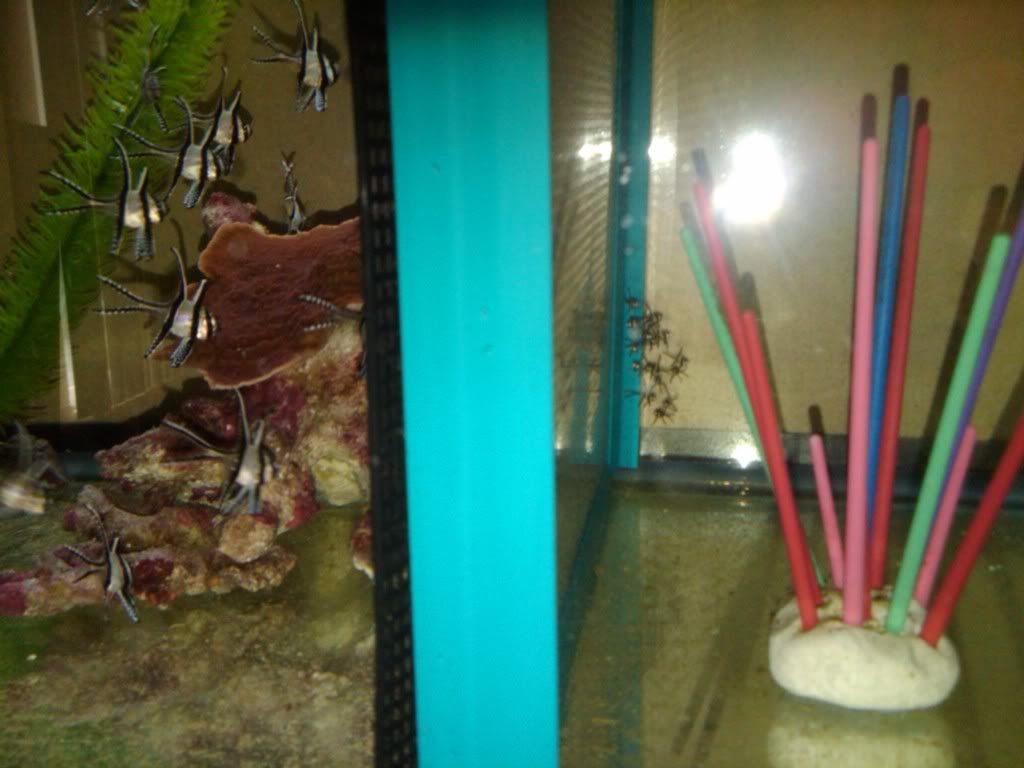
Gravid female
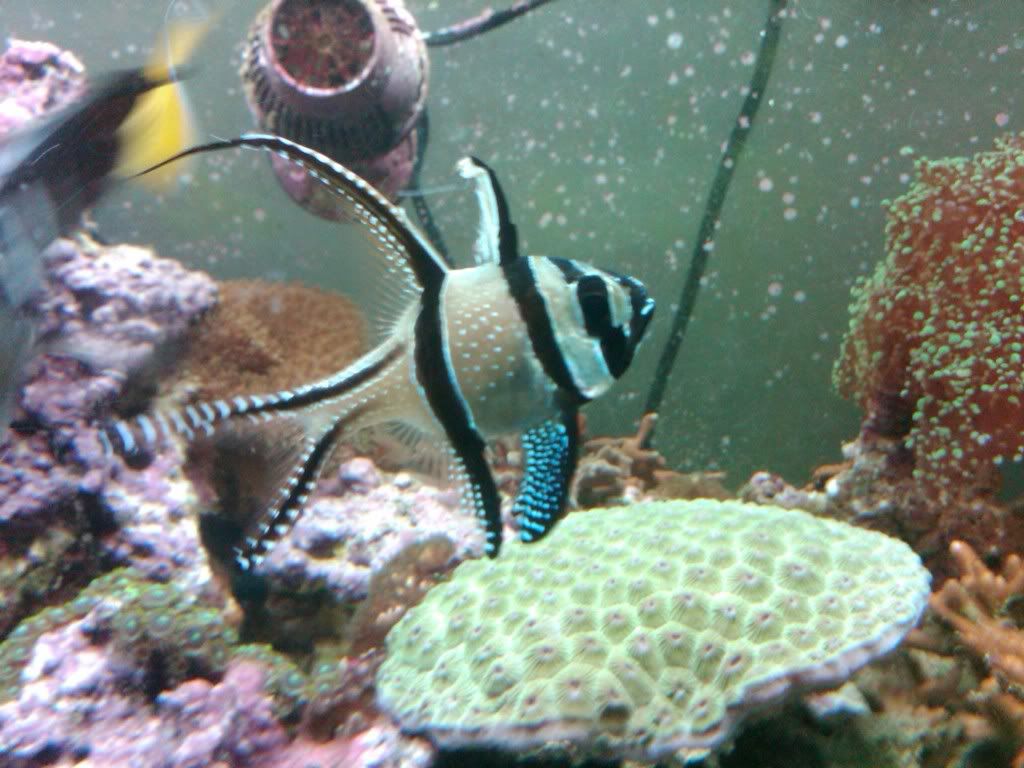
Few days old with pink bellies
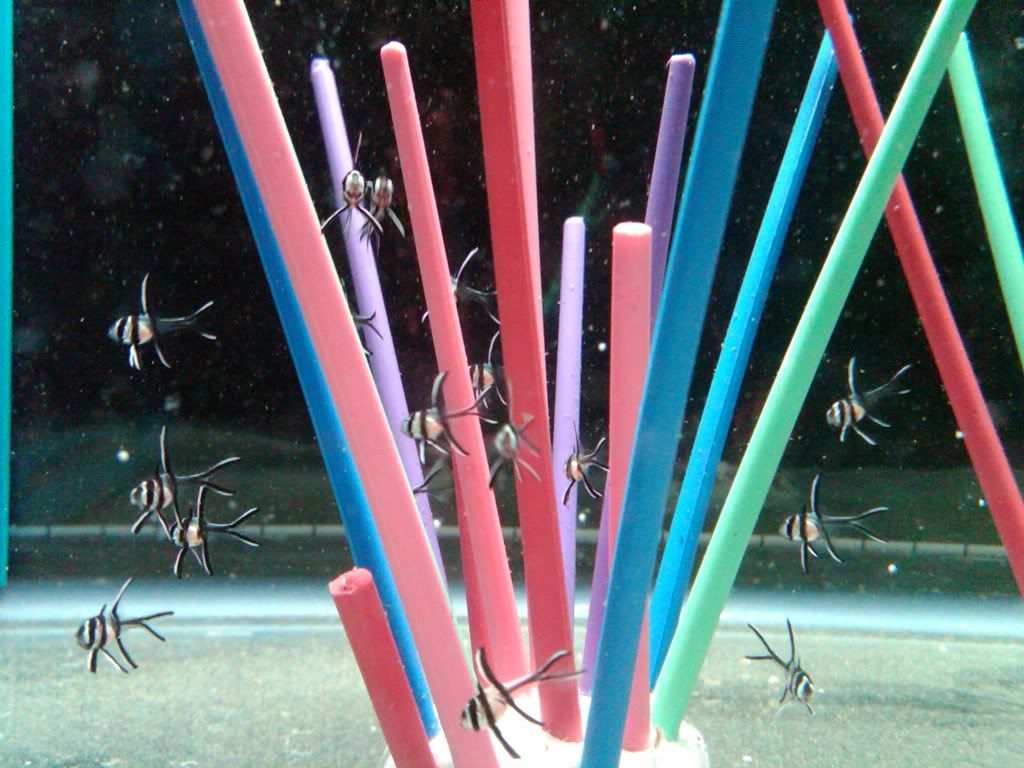
F2 Female
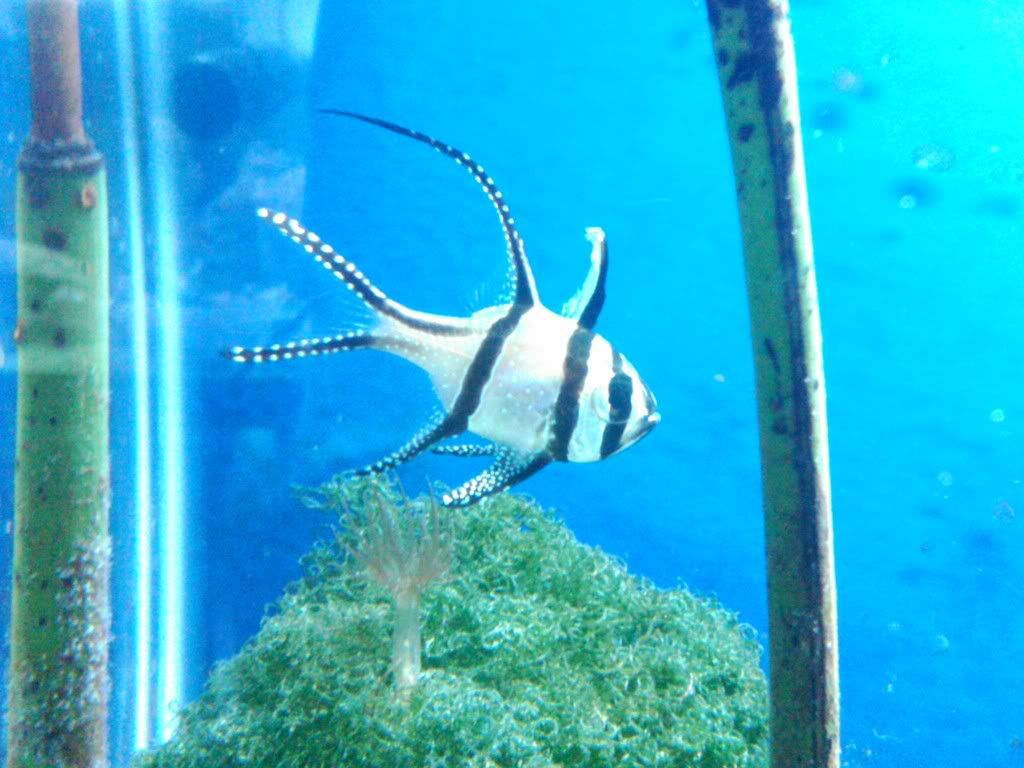
Microscope Shot of enriched Baby Brine Shrimp
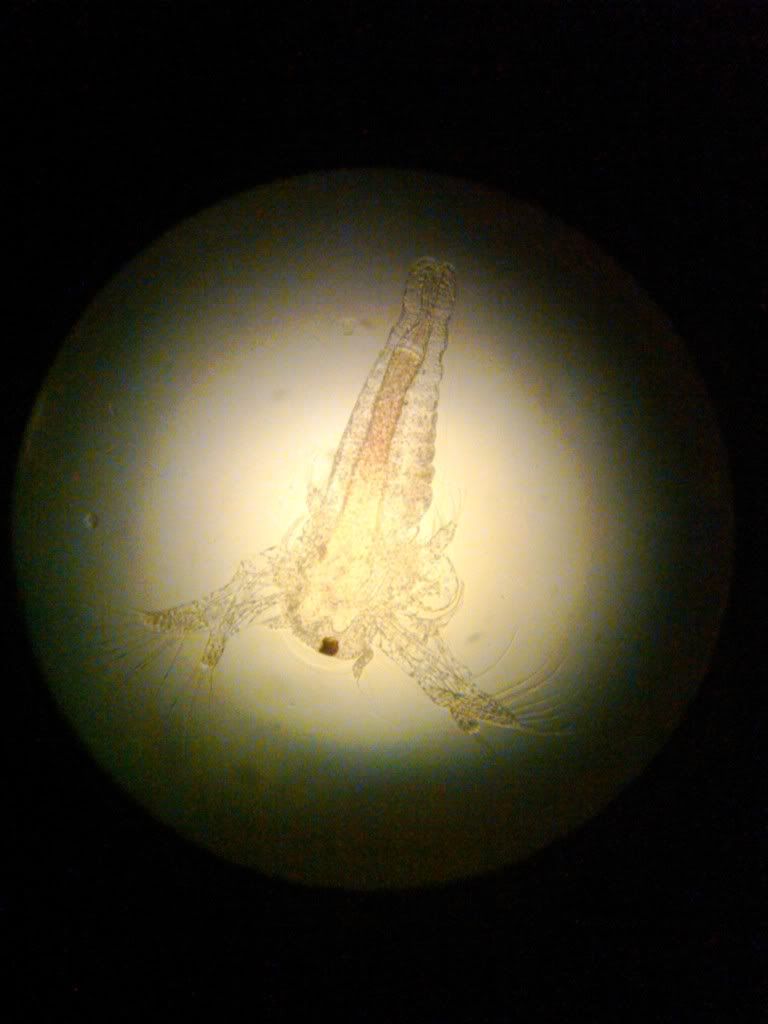
-
Also, is there any technology now that allows you to fax but not through a land-line? and no not email lol
-
Randy....I think you're stuck....just like me. I want live TV' date=' news channels, etc.....so, it's Comcast , Dish, or Direct TV. Beware of Frontier, they're probably surrendering to Comcast (in fact, their install fee was just raised to $500). I just upgraded to triple play. Mine is 149/mo and I get Starz, HBO, and Showtime......price fixed for 2 years. Of course, my whole business still revolves around a fax line, so, it's worth it for me.[/quote']
+1. Although I dont have phone line and I only pay like 88$ tops for HD/DVR cable with showtime, stars, and hbo free. And the fastest internet. Only pay like 89$ per month.
Comcast is best. I wont get dish ever again. When I had it, every time it was rainy and windy it would blur or go out all together. The one time you want to watch tv you cant. They said I had 80+% signal too. Never again
-
Not trying to derail your sale MVP' date=' but why not just make them from PVC?[/quote']
no offense taken...thats what I ended up doing...but at 25$ it may be just as cheap
PM replied...let me know if you want to pick up or me deliver.
-
I have used aqua c remora with mag pump I picked up in a trade... I didnt really need it but I didnt need some big corals worse...also have a tub of extra live rock...if you are interested let me know we can work a trade.
-
is that the megaflow overflow kit thing? I have one? pm me if you want it....ive saved it forever knowing someone would want it...brand new in box...make an offer
-
See if you can insure it
 a quake that big will probably topple my house so I'm not too worried about the tank strength
a quake that big will probably topple my house so I'm not too worried about the tank strengthhaha +1
I am pretty sure it does. I asked my agent if my tank were to explode and everything was lost would it be covered? and he said yes.I would have recorded that haha!
-
byebye lifetime warranties too! wow...to be honest central pet isn't too far behind!
-
+1 on do not fresh dip....research melafix
-
As has been mentioned, never dip SPS in Freshwater. They'll usually not survive.
Depending on what you're dipping for, I'd recommend Coral Rx. If you wanted to take it a couple steps further, I'd recommend Coral Rx, then a Flatworm Exit bath and then a 60 minute Bath, using Interceptor. Those 3 steps are safe, for SPS and will rid your corals of any possible nuisance critters.
That coral is not browned out...its white...I really dont think it can take those dips...just give it TLC for now, are there any polyps?
-
Hopefully Shaun Monaghan will find this thread. He was the owner when Waves was on L. Boonesferry.
He is a member here.
+1. Shoot him a PM. He is very knowledgeable, and likes to help out. He also seems to have some nice connections.
It is very hard to get reasonable custom glass tanks now-a-days
-
Is it psammacora? If so I am interested!
-
+1 on memory cards!
-
about how large is that supernova? Interested. pscorsa?<--- typo?
-
Steak: in order of good to best (also cheapest to pocket buster) = Ringside, Ruth's Chris, El Goucho (THE BEST EVER!!!!!)
I also like gustavs, Kells irish pub, and Jakes.
Benihana is good japanese food. and there are countless good sushi places.
-
I have been doing the same research myself...canon vs nikon is like ford vs chevy. You may find die-hard users of each but both are good. I actually check craigslist, there are always package deals, trust me, flashes tripods, cases add up. I like to find someone that already spent that fortune and wants a little back haha!
Honestly you cant go wrong with either. Acuraguy55, Jason, was explaining to me a few differences (he has both) and said they are really similar but the feeling in the hand is the main difference, so go with what is comfortable. Just use judgement and don't rush it. GOOD LUCK! POST SOME PICS haha!
-
still got some maxi-minis panther! I would love the strawberry dart frogs aka blue jeans. They are like impossible to find and if you did you would likely pay about 200 each
you can keep the forest cobra in oregon...although some cities have ordinances against it (and they are really cracking down.)
For those wanting to see the latest list of prohibited and non-controlled species: http://www.dfw.state.or.us/OARs/56.pdf
-
I don't advocate the keeping of venomous or extremely large snakes under "normal" circumstances but yes, I have seen some defanged cobras and things like that. Rattle snakes are common too as are different vipers/adders. Some are illegal in oregon, probably for good reason, seem to be ticking time bombs - seen the show fatal attractions?
I personally haven't kept snakes in awhile but I personally would want an emerald tree boa or python or a pied ball python.
-
You ever hit the Portland Metro Reptile Expo? There are quite a few people that are really into Darts' date=' some amazingly beautiful setups too.[/quote']
Yeah I go to these every chance I get. Also much like corals, some of these animals are kind of seasonal and shipping is expensive and hazardous, so I take advantage to buy locally to avoid shipping and hand pick whenever possible.
The next one is in august in portland. I am also going to setup a booth at the reptile show at OMSI in sept.
-
yeah you feed flightless fruit flies. there are a few sizes. They are honestly one of the easiest animal I think I have ever kept. keeping in mind you cannot handle them, they are really quite durable once a healthy specimen is acquired. Pretty much the only rules are RO water... a temps between 65-80 (winter-summer and night-day), and fairly humid.
Keeping the fruitfly cultures, and misting (mines is automated), is the only maintenance. Keeping fruit flies is pretty easy. Kept in deli containers and I use commercial media you just add water to, and some mesh for the flies to climb on. I make new cultures about every 2 weeks and they last a month. Pretty basic. Then you just dust the flies with calcium or minerals and feed daily to every other day in summer, and a few times weekly in winter.
"Poison" dart frogs are not actually poisonous in captivity. In nature these animals consume a lot of ants. These ants have ingested an alkaloid (toxic) plant. This toxin bio-accumulates as it goes up the food chain and the frogs have the ability to store and release this toxin upon stress. Therefore, no poisonous prey = safe frogs! However, I still treat them as they were poisonous due to their extremely fragile physical nature.
As far as sounds they hardly make any sounds. During the spring (mating season), males can make a sharp calling sound that sounds much like a small cricket. It is never constant or annoying and be very satisfying to witness, much like a coral or fish spawning.
There isn't much cleaning involved with the frogs as their small amount of waste really helps to fertilize the plant growth. And the required environment for a few is quite small, a pair could easily be housed in a 15-20 gallon.
Mantella frogs are very similar to dart frogs, however they can be a little more intolerant of higher temps (above 80).
check out dendroboard.com if you want to check out some other cool ideas!
-
Anyone on the boards keep dart frogs or mantella frogs? or any kind of frogs?
I personally have a colony of 6 Dendrobates leucomelas (yellow and black dart frogs). A pair of Dendrobates azureus (blue and black) and a new pair of golden mantella frogs. I used to have red eye tree frogs but sold them because they were too nocturnal and I wanted to focus on darts & mantellas.
I ask because dart frog/terrarium keeping is a science much like reef keeping and the colors are also amazing! If you are thinking about keeping them you should! Just like corals they appreciate with time.
If you have any questions let me know! I am glad to help!
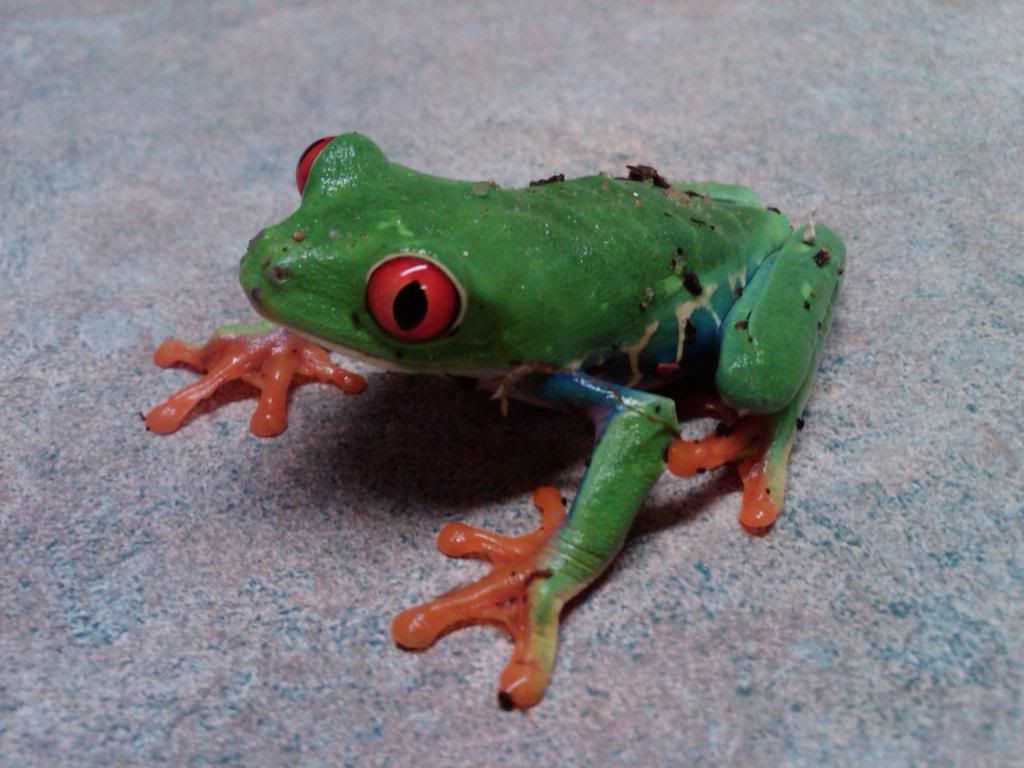
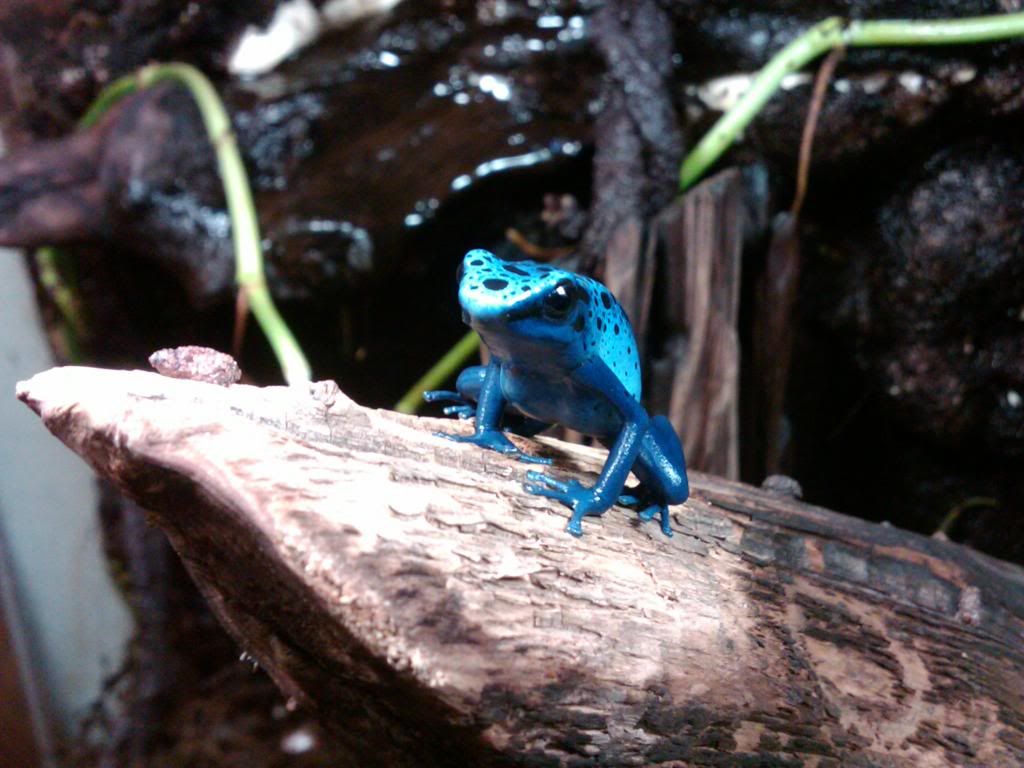
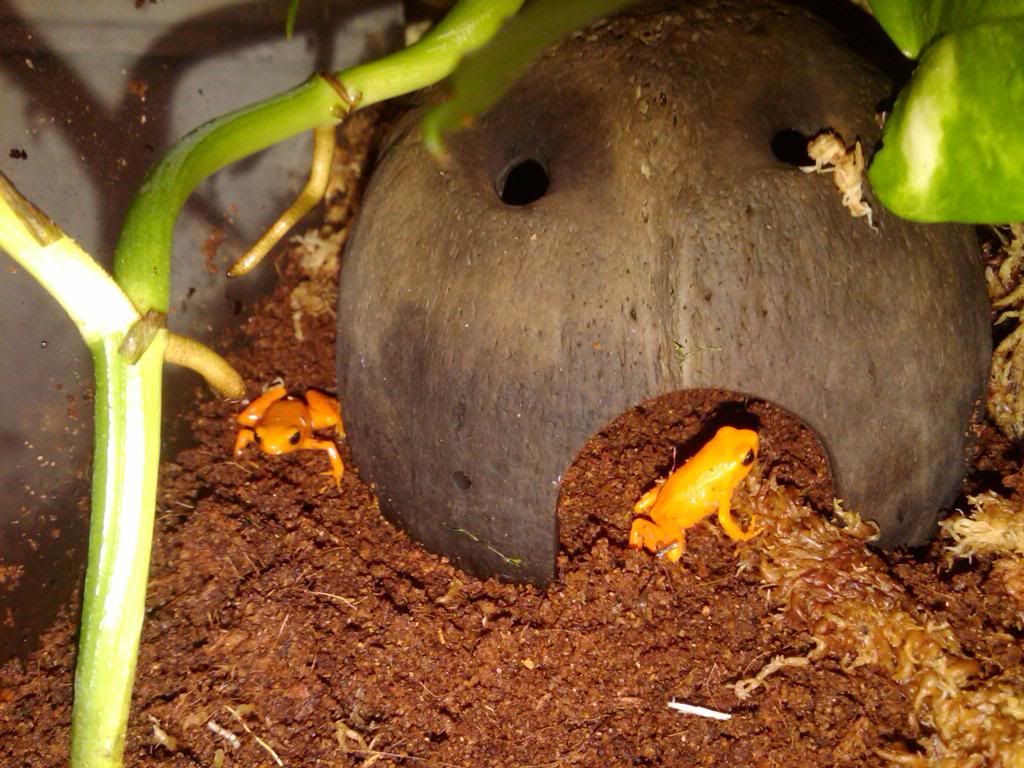
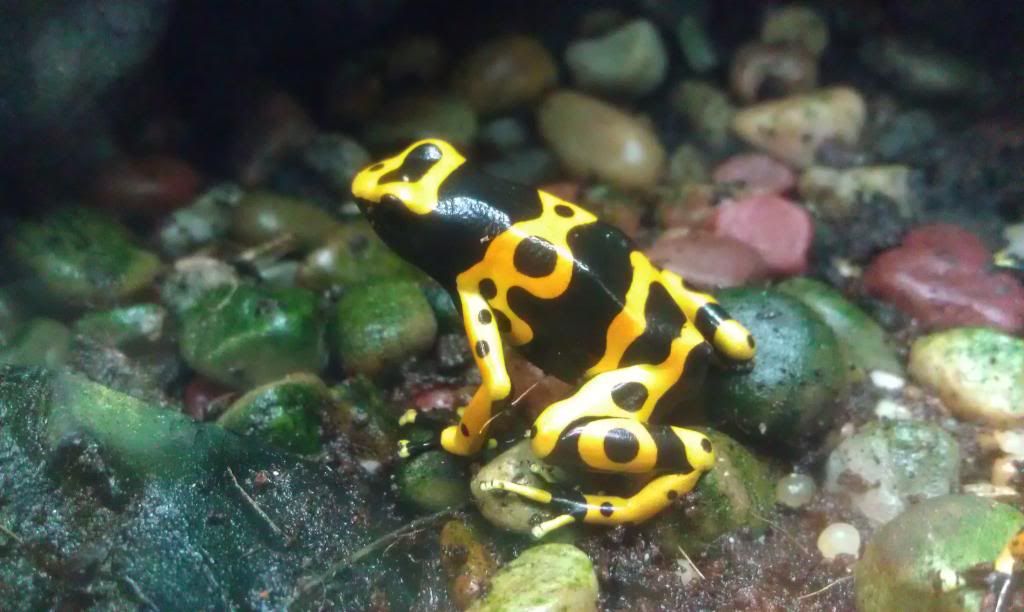
-
My fuge is under my tank' date=' but is not used as food source. Mine is used to keep my nitrates down and the plants take out the extra CO2 from my calcium reactor. When the plants start to over grow the fuge, I feed a bunch to my tangs to thin it out..[/quote']
same as what I do...somehow food still makes it...I love the nutrient circle!
-
if i only self informed, and knew that i was taking 100% risk with every fish, then i see no reason to go a lfs. a wholesaler is a wholesaler because they sell the fish. that's it. a lfs gives extra info and liability with the purchase (well worth the price increase). i trust lfs owners to pick stocking lists that are reasonable. i trust lfs owners not to sell me diseased fish...and i trust store owners to provide me with adequate and realistic information with my purchase.
i am not about to buy a fish with disease then get told that "i should have know what it was when i bought the fish", no i expect a fish store to QUARANTINE the fish, and give fair warning
and of it is my sole "responsibility to educate [myself]", and rule out the opinion of the lfs, then i have no reason to pay that extra price hike.
I totally agree with you...if it is up to the hobbiest, what is the point of having a LFS? to pay higher prices?
That is the one positive about online sales I have found is WAY more people research the livestock AND the company before purchase...going to a LFS often leads to more impulse buys. To each his own. Personally I think half these animals should require a permit to own, USDA inspected haha
-
I agree flatworm exit work, can you get a wrasse too? sixlines are good. just to get any you miss



My experiences breeding Banggai Cardinals....PICS & VIDS
in Fish
Posted
VIDEO Links to my photobucket account:
1 week old feeding on Baby Brine Shrimp
1 month old eating frozen brine shrimp
Newly hatched baby brine shrimp vs. Few hour old enriched baby brine